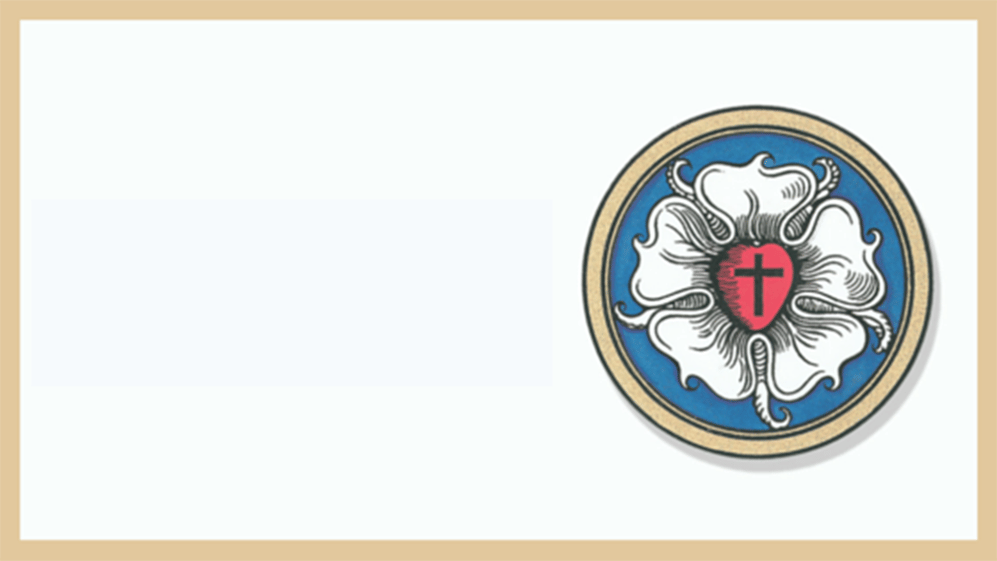The Reformation is the cornerstone of our Lutheran faith. Teaching it to the future generation is important to uphold the central doctrine of rich faith and tradition we share this time of year. The following ideas will help teachers bring the story, characters and ideas of Reformation to life. Teachers may use them and adapt them according to their needs and students.
Diet of Worms
This activity for elementary students will help students understand the concept of the Diet of Worms. Explain that the Diet of Worms did not involve actually eating worms, but rather discussing theology in a city called Worms. At this meeting before the emperor of the Holy Roman Empire, Martin Luther was led by God to affirm his writing about God’s grace and His gift of salvation through faith alone. Luther was opposed and officially condemned by the emperor after this meeting. After explaining the work of Luther at Worms, give each student a “dirt cup” (recipe below) and invite them to eat it as you explain the importance of talking about their faith to family, friends, classmates, and neighbors. For younger students consider just serving the worms. This keeps messes to a minimum.
Diet of Worms Dirt Cup Recipe
Supplies:
- Small drinking cups
- Crushed Oreos
- Chocolate Pudding
- Gummy Worms
Directions:
Place a thin layer of crushed Oreos on the bottom of the cup, then layer the chocolate pudding and top with another layer of Oreos. Place 3–4 gummy worms on top. Refrigerate prior to serving,
Ninety-five Theses
One of the most familiar teachings of the Reformation, this event sparked the beginning of the Reformation. Martin Luther nailed ninety-five theses to the front door of the Wittenberg church marking the beginning of the Reformation. These statements were things Luther felt needed to be changed about the church. Luther believed the church should be based upon faith alone, grace alone and Scripture alone.
- Preschool—A simple color sheet with Luther nailing up the Ninety-five Theses
- Elementary—Create a church door in the hallway using poster paper. Prepare half sheet coloring pages with statements like “We are saved by Jesus alone,” and “The Bible in our own language,” “Jesus is all we need,” “Grace Alone,” “Scripture Alone,” “Faith Alone.” When students are finished hang them on the door you created. Teachers can talk about each of the statements and how they relate to the Reformation today. For older elementary students talk about standing up for something and let them think of things they would stand up for, and have them look at the Ninety-five Theses and discuss what Martin Luther stood for.
True and False
For upper elementary grades students research facts about Martin Luther and the Reformation to create your own True and False quiz. Give each student a copy of your quiz and have them write true of false after each of the statements. Go through the test and award a prize for the student who has the most correct. Then proceed with the lesson.
Word Searches
This learning activity will help introduce the main concepts and people of the Reformation. Word searches can be a great way to keep the main words of the lesson before the class and as they search for the words. You can use this for elementary grades on up. Do an internet search for words related to Luther and the Reformation. A simple Web search will guide you to puzzle creating sites where you can make your own puzzles.
Luther’s Seal
Luther‘s Seal, also called Luther’s Rose, serves as an identifying visual for Martin Luther. Each of the colors in the seal represents something Martin Luther taught about our faith and life. Teachers can share with student the meanings of each part of the seal.
- Preschool—Print outlines of the seal for students to color
- Elementary—Give the coloring sheet a stained glass appearance by using tissue paper glued in place rather than coloring.
Watch the Luther Movie
For older students consider viewing one of the many movies of Martin Luther’s life. Because of the length of the films you may need to spread out the viewing over a few weeks.
Explore the Catechism
Explore the catechism with students of all ages. Teachers can explain how Luther designed the six chief parts of the catechism as a way to help parents teach the faith to their children. Talk about how parents help teach their children about many things in life including the faith.
Sing Luther's Hymns
Luther wrote many hymns. The most famous is “A Mighty Fortress is Our God.” However, Martin Luther wrote many others such as:
- “From the Depths of Woe I Cry to Thee” (LSB 607),
- “To Thee, Omniscient Lord of All” (LSB 613),
- “We Sing the Praise of Him Who Died” (LSB 429).
Teach Luther’s Morning and Evening Prayers
Martin Luther wrote a number of prayers used in the church. His Morning and Evening prayers are especially appropriate for children and families. Setting Luther’s prayers to music helps students remember these fantastic prayers for daily living.
Host a Reformation Day Party
Your Sunday School can make this Reformation a big celebration for all everyone by taking three or four ideas and creating learning stations where students do activities. Students can spend ten minutes at each station and have a closing message to sum up what they learned, and sing one of Luther’s hymns.
Looking for more Reformation-themed activities? Download some activity sheets using the link below.
This article originally appeared in the Fa11 2012 edition of Teacher's Interaction.














